| Pages:
1
..
3
4
5
6
7
8 |
B(a)P
International Hazard
    
Posts: 1139
Registered: 29-9-2019
Member Is Offline
Mood: Festive
|
|
Quote: Originally posted by Nemo_Tenetur  | Last week I tried the synthesis from nickel perchlorate (itself synthesized from commercially available nickel nitrate and soda, the precipitate was
filtered, washed and redissolved in perchloric acid) and aminoguanidine perchlorate (prepared from commercially aminoguanidine bicarbonate and
perchloric acid).
I´ve always used less than the theoretical amount perchloric acid, in both cases some insoluble carbonate / bicarbonate remained at the bottom of the
vessel even if stirred over night.
Then I decanted the solutions from the insoluble impurities, the aminoguanidine perchlorate solution was yellow. I combined the solutions by dropwise
addition of the nickel perchlorate solution to an excess aminoguanidine perchlorate solution and heated the reaction mixture until bubbles appear,
then hold the temperature for several minutes and let it cool again to room temperature.
No visible reaction, no precipitate, nothing even after two days.
Disappointing.
Maybe the solutions were not concentrated enough or maybe the heating was not enough? Maybe the bubbles were simple carbon dioxide instead almost 100
degree centigrade water vapors? I didn´t use a thermometer to check the temparature, this was a mistake.
Is this reaction so temperature and/or concentration sensitive that slight alterations lead to a zero yield?
|
The reaction is very sensitive to water, what mass of water and reactants did you use? You should use no more water than will dissolve your reactants
at an elevated temperature. I also believe the formation of the complex more readily occurs at lower pH.
|
|
|
Etanol
Hazard to Others
  
Posts: 178
Registered: 27-2-2012
Member Is Offline
Mood: No Mood
|
|
Quote: Originally posted by Nemo_Tenetur  | Last week I tried the synthesis from nickel perchlorate (itself synthesized from commercially available nickel nitrate and soda, the precipitate was
filtered, washed and redissolved in perchloric acid) and aminoguanidine perchlorate (prepared from commercially aminoguanidine bicarbonate and
perchloric acid).
I´ve always used less than the theoretical amount perchloric acid, in both cases some insoluble carbonate / bicarbonate remained at the bottom of the
vessel even if stirred over night.
Then I decanted the solutions from the insoluble impurities, the aminoguanidine perchlorate solution was yellow. I combined the solutions by dropwise
addition of the nickel perchlorate solution to an excess aminoguanidine perchlorate solution and heated the reaction mixture until bubbles appear,
then hold the temperature for several minutes and let it cool again to room temperature.
No visible reaction, no precipitate, nothing even after two days.
Disappointing.
Maybe the solutions were not concentrated enough or maybe the heating was not enough? Maybe the bubbles were simple carbon dioxide instead almost 100
degree centigrade water vapors? I didn´t use a thermometer to check the temparature, this was a mistake.
Is this reaction so temperature and/or concentration sensitive that slight alterations lead to a zero yield?
|
Add water ammonia by drop after mixing Ni(ClO4)2 and AGu*HClO4 to pH=7.5...8:
Ni(ClO4)2+2AGu*HClO4+2NH3=>Ni(AGu)2(ClO4)2 (solid)+2NH4ClO4 (solution)
Then cold it to 0...5 Celsium.
Very nice and fast reaction
Long heating is not required in this method.
[Edited on 12-4-2024 by Etanol]
|
|
|
Microtek
National Hazard
   
Posts: 854
Registered: 23-9-2002
Member Is Offline
Mood: No Mood
|
|
I would be wary of using ammonia for adjusting pH. I think you risk substituting some of the aminoguanidine ligands.
|
|
|
Laboratory of Liptakov
International Hazard
    
Posts: 1381
Registered: 2-9-2014
Location: Technion Haifa
Member Is Offline
Mood: old jew
|
|
I feel that will partially created Diamine nickel perchlorate. Which is relatively weak salt on energy.
Development of primarily - secondary substances CHP (2015) Lithex (2022) Brightelite (2023) Nitrocelite and KC primer (2024)
|
|
|
Etanol
Hazard to Others
  
Posts: 178
Registered: 27-2-2012
Member Is Offline
Mood: No Mood
|
|
Quote: Originally posted by Microtek  | | I would be wary of using ammonia for adjusting pH. I think you risk substituting some of the aminoguanidine ligands. |
Substituting with ammoia?
I have already prepared the subs with this method. Its color, solubility and explosive properties are identical to the NAP.
May be, Ni hexaammine perchlorate is formed in excess NH3, I don't check it.
|
|
|
pjig
Hazard to Others
  
Posts: 164
Registered: 25-5-2010
Member Is Offline
Mood: always learning
|
|
Gotta ask , is the initiation properties of nap reliable as something like azides ? Common method of cap manufacture (dense secondary base charge ,
medium pressed secondary, followed by a primary lightly pressed initiated by either ematch or fuse.
Can NAP function in that det orientation? Or as other “det trains “needs an intermediate 50/50 mix of primary and secondary to achieve this ddt
transfer to the high density secondary base?
|
|
|
B(a)P
International Hazard
    
Posts: 1139
Registered: 29-9-2019
Member Is Offline
Mood: Festive
|
|
Yes
Quote: Originally posted by pjig  | Common method of cap manufacture (dense secondary base charge , medium pressed secondary, followed by a primary lightly pressed initiated by either
ematch or fuse.
Can NAP function in that det orientation? |
Yes
Quote: Originally posted by pjig  | | Or as other “det trains “needs an intermediate 50/50 mix of primary and secondary to achieve this ddt transfer to the high density secondary base?
|
Not required.
Have a read through this thread I think Hey Buddy has tested the effectiveness of initiation. I have also done this on a small scale and it performs
well. No need for any special primary secondary mixing.
|
|
|
pjig
Hazard to Others
  
Posts: 164
Registered: 25-5-2010
Member Is Offline
Mood: always learning
|
|
Awesome! Ty for the quick response. I thought I read that back a ways in the thread, but couldn’t find it anywhere….
NAP is very energetic like azides. Single crystal dets. Remarkable for such a simple synth.
It begs the question why it isn’t used more in an industry standard . Wondering if its down falls are potential toxic gas in the byproducts of
decomposition. Seems like the material isn’t hydroscopic , maybe incompatibilities with other things (metals or secondaries)
Maybe it’s the low density, or Chrystal long needle’s sensitivity, or issues with packing in a det cap that may present a problem.
What pressures and or techniques are utilized to work with this primary . Maybe a visit with the IPA version will be a better fit for dets.
[Edited on 15-4-2024 by pjig]
|
|
|
Etanol
Hazard to Others
  
Posts: 178
Registered: 27-2-2012
Member Is Offline
Mood: No Mood
|
|
I think it decomposes under the influence of moisture and CO2.
|
|
|
Microtek
National Hazard
   
Posts: 854
Registered: 23-9-2002
Member Is Offline
Mood: No Mood
|
|
| Quote: |
Chrystal long needle’s sensitivity |
If you stir it continually during precipitation, it will form a powder rather than crystals.
Regarding decomposition when exposed to CO2 and moisture, I think you are right. But LA does this as well...
|
|
|
Laboratory of Liptakov
International Hazard
    
Posts: 1381
Registered: 2-9-2014
Location: Technion Haifa
Member Is Offline
Mood: old jew
|
|
Add water ammonia by drop after mixing Ni(ClO4)2 and AGu*HClO4 to pH=7.5...8:
Ni(ClO4)2+2AGu*HClO4+2NH3=>Ni(AGu)2(ClO4)2 (solid)+2NH4ClO4 (solution)
Then cold it to 0...5 Celsium.
Very nice and fast reaction
Long heating is not required in this method.
I read that the crystals were tested for detonation properties. After a new method of preparation. Using ammonia water is a breakthrough in NAP
preparation technology. It simplifies the whole process. Great job, Etanol.
Even ammonium perchlorate we obtain.... ...Absolut useful reaction. ...Absolut useful reaction.
[Edited on 15-4-2024 by Laboratory of Liptakov]
Development of primarily - secondary substances CHP (2015) Lithex (2022) Brightelite (2023) Nitrocelite and KC primer (2024)
|
|
|
pjig
Hazard to Others
  
Posts: 164
Registered: 25-5-2010
Member Is Offline
Mood: always learning
|
|
Damn! This is just getting better by the day! lol
I am going to give the ammonia process a run . I took the beaker off the hot plate after the 7.5 min and let it cool undisturbed , if left on hot
plate it would have cooled much slower , maybe not a problem and left to stir during rechrystalization phase. Or pull off the hot plate and stir on a
cold surface .
Yes I’ll do the ammonia process at this point , (at the boiling point or the point where the reaction starts to cool?) also what is your method of
testing for ph….paper , pen , probe, tongue 
|
|
|
pjig
Hazard to Others
  
Posts: 164
Registered: 25-5-2010
Member Is Offline
Mood: always learning
|
|
Well I assumed that this newer process would offer a safer material for packing caps. What density would be suitable for the “old h2o method “ vs
the new finer form of material?
|
|
|
Etanol
Hazard to Others
  
Posts: 178
Registered: 27-2-2012
Member Is Offline
Mood: No Mood
|
|
Quote: Originally posted by pjig  | at the boiling point or the point where the reaction starts to cool?) also what is your method of testing for ph….paper , pen , probe, tongue  |
neutralisation AGu*H2CO3 with HClO4
mixing of Ni(ClO4)2 and AGu*HClO4 solutions
heating to 80-90C (boiling is not necessary)
add NH3 with pH paper control
(evaporation of NH3 excess)
slow cooling with fast stirring
filtering
drying
|
|
|
Laboratory of Liptakov
International Hazard
    
Posts: 1381
Registered: 2-9-2014
Location: Technion Haifa
Member Is Offline
Mood: old jew
|
|
And the NH3 (or NH4OH) is added to water at 80 C..?...I estimate some splashing liquid. Final solution should be pH neutral..?..Thanks...
(Edit: Etanol sure a lot years using as probe own tongue)
[Edited on 16-4-2024 by Laboratory of Liptakov]
Development of primarily - secondary substances CHP (2015) Lithex (2022) Brightelite (2023) Nitrocelite and KC primer (2024)
|
|
|
B(a)P
International Hazard
    
Posts: 1139
Registered: 29-9-2019
Member Is Offline
Mood: Festive
|
|
Quote: Originally posted by Etanol  |
neutralisation AGu*H2CO3 with HClO4
mixing of Ni(ClO4)2 and AGu*HClO4 solutions
heating to 80-90C (boiling is not necessary)
add NH3 with pH paper control
(evaporation of NH3 excess)
slow cooling with fast stirring
filtering
drying |
What yield do you get with this method? Have you compared slow cooling to fast cooling?
|
|
|
Etanol
Hazard to Others
  
Posts: 178
Registered: 27-2-2012
Member Is Offline
Mood: No Mood
|
|
Very weakly alkaline, I think.
It is difficult to immediately catch the pH drop by drop. But it is easy to evaporate the excess ammonia.
About 80-90%. I collected and evaporated the spent solution (NH4ClO4 + AGu*HClO4). A little red crystals formed and there was almost no green
Ni(ClO4)2 or Ni(OH)2.
Fast cooling forms dust and agglomerates.
Slow cooling forms visible crystals. Fast stirring and mechanical crushing break them into convenient powder with good bulk density.
NAP is well soluble in hot AGu*HClO4 solution, but poorly soluble in cold.
|
|
|
pjig
Hazard to Others
  
Posts: 164
Registered: 25-5-2010
Member Is Offline
Mood: always learning
|
|
IPA method;
I have Found and confirmed that fast cooling does create a very fine particulate. Hopefully not a disadvantage. Usually finer material equals less
sensitivity. After solution was heated for 7.5 minutes it was pulled and kept on stirring on a cool surface.. Stirring was continued for one hour then
material was filtered with IPA. Not sure the solution needed to be stirred for that long while going to ambient temp.
Is the better method to do what I did , pulling off hot plate and continuing stirring, or turn off hot plate and let cool slowly while stirring , or
discontinue stirring (with IPA) .
Is there a advantage to using ph control with NH3 at this point for improvement in Chrystal formation and yield?
[Edited on 21-4-2024 by pjig]
|
|
|
Etanol
Hazard to Others
  
Posts: 178
Registered: 27-2-2012
Member Is Offline
Mood: No Mood
|
|
Quote: Originally posted by pjig  | IPA method;
Is there a advantage to using ph control with NH3 at this point for improvement in Chrystal formation and yield?
|
Without NH3, method with HClO4 don't work. Yield is null.
In your method, from AGuCO3+Ni(ClO4)2 or AGuCO3+NiCO3+NH4ClO4, NH3 is not required.
[Edited on 23-4-2024 by Etanol]
|
|
|
pjig
Hazard to Others
  
Posts: 164
Registered: 25-5-2010
Member Is Offline
Mood: always learning
|
|
I see. Thank you for clarifying. The IPA process is substantially a more desired product, in both particle size as well as returns , being a higher
yield..
Is there any experimenting done with different percentages of alcohol, including absolute alcohol? Wondering if there is a need for a small percentage
of water to take insoluble material into solution.
|
|
|
Hey Buddy
Hazard to Others
  
Posts: 421
Registered: 3-11-2020
Location: Bushwhacker Country
Member Is Offline
|
|
Quote: Originally posted by pjig  | I see. Thank you for clarifying. The IPA process is substantially a more desired product, in both particle size as well as returns , being a higher
yield..
Is there any experimenting done with different percentages of alcohol, including absolute alcohol? Wondering if there is a need for a small percentage
of water to take insoluble material into solution. |
When first experimenting with this material, I attempted the patent procedure substituting denatured alcohol for water and was unable to achieve
reaction within 5 minute boiling interval. I should also mention that I attempted the reaction with propylene glycol and it reacted to form a red oil
product. I did not test its character.
I am continuing to experiment with variations of the material. Overall I have found that IPA product is less sensitive to impact but also somewhat
less powerful when unconfined, likely due to native density of the morphology, being a powder. I havent had any problems with pressing the material. I
have experienced failures to transfer heat to initiate DDT in some cap designs using secondary, then primary, then a high temp pyrogen between fuze
and primary. I found more success with that initiation train plasticizing the pyrogen with nitrocellulose and dipping the end of the fuze. This seems
to give longer duration of heat output on the side of the fuze rather than a short spit from the end axis of the fuze.
|
|
|
pjig
Hazard to Others
  
Posts: 164
Registered: 25-5-2010
Member Is Offline
Mood: always learning
|
|
With e match There is a pretty energetic ignition. Any failures with this approach? Or need for boosting ignition beyond commercial ematch?
[Edited on 30-4-2024 by pjig]
|
|
|
Hey Buddy
Hazard to Others
  
Posts: 421
Registered: 3-11-2020
Location: Bushwhacker Country
Member Is Offline
|
|
Quote: Originally posted by pjig  | With e match There is a pretty energetic ignition. Any failures with this approach? Or need for boosting ignition beyond commercial ematch?
[Edited on 30-4-2024 by pjig] |
I have been really working on this material. I have found another variation recently in the past week. Im still researching the particulars, because
the procedure is a bit sensitive to variables, giving mixed results.
I begin with the standard process for H2O solvent. After 5 minutes of boiling, I decant the reaction fluid leaving behind unreacted solids. The
reaction fluid is then placed in a larger cool water bath and sonicated at 42kHz for 10 minutes. The resulting product is a highly dense powder.
Possibly nano. Not really sure. It appears smaller crystal than any comparative powder I have.
This powder is considerably more brisant than any other morphology tested. I would consider it a technologically different material. I would compare
its brisance to AgNTz or PbNATz. It can achieve clean punctures on Al foil at masses less than 1 mg. This is not possible with even larger slow
crystallized morphology NAP, although they do detonate as single crystals, They don't really puncture Al foil.
In terms of sensitivity, crystal NAP is by far the most mechanically sensitive. It is sensitive to impact and friction within range expected in
primary explosives. It is pretty sensitive.
IPA NAP (iNAP) is friction insensitive and possibly two to four times less impact sensitive than crystal NAP. Perhaps less, I dont have an apparatus
but i have tested this comparison by hand a few dozen times.
Ultrasonicated NAP (uNAP) is ever so slightly less impact sensitive than crystal form, practically the same. It is insensitive to friction compared to
crystal NAP. I was unable to detonate uNAP with a 4 lb mallet with pressure and repeated rubbing on top of concrete. While it detonates with a slight
tap.
So far in ematch firing of material, it appears that iNAP fires well on ETN with around 25 mg or more. Below that, I have had some failures but I have
since updated ematch configuration and it appears to be firing very well in the new configuration into lead blocks, so I will be testing again at sub
25 mg masses. uNAP fires at very small masses. At 25 mg it leaves a considerable impression in lead block at a firing diameter 3.25 mm. Ematches work
very well with NAP in any of its forms. E matches directly fire iNAP at lower masses. Still testing blasting cap fillers to determine minimum loads.
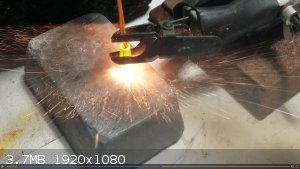 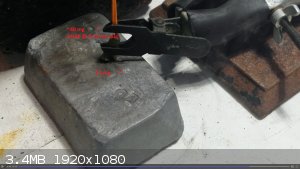
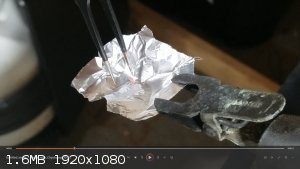 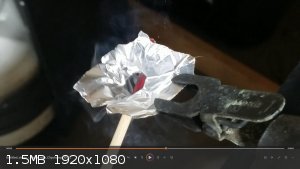
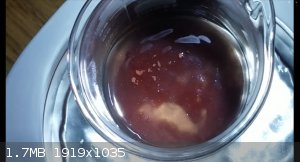
[Edited on 5-5-2024 by Hey Buddy]
|
|
|
pjig
Hazard to Others
  
Posts: 164
Registered: 25-5-2010
Member Is Offline
Mood: always learning
|
|
That is very interesting, using frequency to reduce particle size. Very clever! As for ematch, it is usually a pretty energetic form of ignition .
Almost enough to detonate plutonium… 
Well not quite, but enough to start most primaries.
Are your ematch 25 mg primes very reliable for petn or etn ?
And you’re attempting to find reliable minimal amounts for initiation …….
I’m thrilled to see what new findings you come up with
[Edited on 8-5-2024 by pjig]
|
|
|
pjig
Hazard to Others
  
Posts: 164
Registered: 25-5-2010
Member Is Offline
Mood: always learning
|
|
Any new findings for the threshold ddt amount for the NAP? 25mg seems a little high compared to other primaries like azides . Azides boast a .5~10 mg
ddt ability on their initiation qualities. Pretty low compared to most primaries on the market
[Edited on 27-5-2024 by pjig]
|
|
|
| Pages:
1
..
3
4
5
6
7
8 |